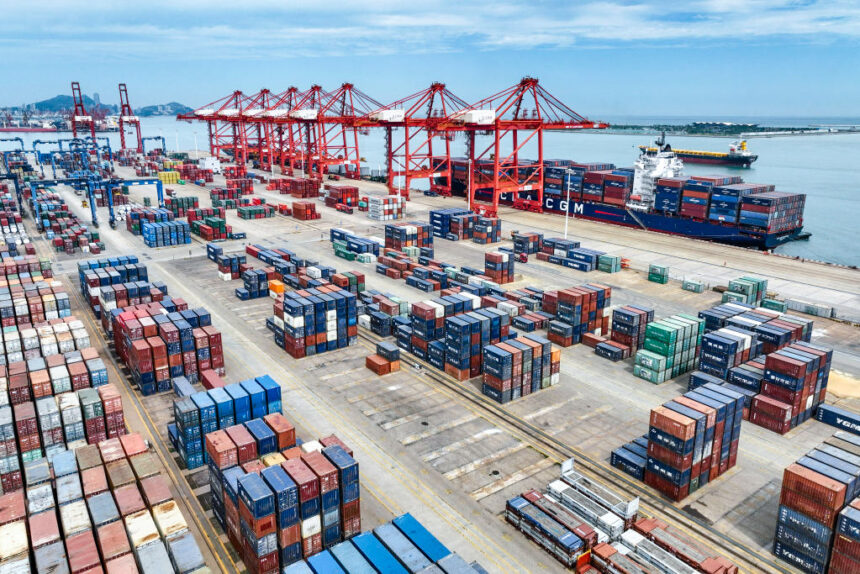Commentary
Tariffs play a crucial role in the economic conflict with communist China. They serve to safeguard U.S. supply chains, revitalize manufacturing, generate employment, forge alliances with partners, and restrict funding to the Chinese Communist Party (CCP). This, in turn, hampers the progress of the People’s Liberation Army (PLA) and delays its preparedness for potential conflict with the United States.
Both presidential candidates—former President Donald Trump and Vice President Kamala Harris—have advocated for the continuation of trade restrictions on China. While Harris has not outlined detailed policies yet, her stance is anticipated to be less aggressive than Trump’s proposed 60 percent tariff on Chinese imports. This milder approach has led to a gradual disentanglement from China rather than a complete separation, which would sever critical supply chains and halt U.S. financial support to the CCP.
Harris and other critics argue that Trump’s tariffs will escalate prices for American consumers. While true, the primary objective is to deter the purchase of Chinese goods by increasing their cost. The U.S. intelligence community’s Annual Threat Assessment consistently flags China as the top threat to national security, raising concerns about U.S. funds flowing to the CCP.
The Department of Defense reports significant advancements in the PLA’s modernization efforts, aiming for key milestones in 2027, 2035, and 2049. This modernization drive involves hefty investments in cutting-edge technologies like AI, quantum computing, hypersonic missiles, cyber capabilities, and unmanned systems.
The escalation of PLA modernization incurs substantial costs and resources, necessitating investments in advanced technologies, infrastructure upgrades, and personnel training.
China’s military budget surged to $233 billion in 2024, showcasing a substantial increase despite economic slowdown. Analysts argue that this figure underestimates actual military spending by excluding key expenses like research and development, space operations, and defense subsidies. Factoring in these hidden costs could inflate China’s true military expenditure to as much as $700 billion.
China is projected to fall short of its 5 percent GDP growth target, and a 60 percent tariff could further strain the economy, curbing growth and state revenues that fund military outlays. This financial constraint might impede China’s investments in advanced military capabilities, potentially delaying its military objectives for 2027, 2035, and 2049.
By continuing to purchase Chinese products, Americans essentially incur a tariff-induced tax, with the revenue benefiting the U.S. government. This additional income aids government functions without necessitating income tax hikes. The tariff is also deemed fairer than an income tax as it is voluntary, allowing consumers to choose whether to pay the tariff or not.
Implementing tariffs creates an opportunity for increased domestic production, fostering U.S. industrial growth, securing supply chains, and mitigating the risk of technology theft by China. Incentives provided by Trump, such as tax breaks, encourage companies to establish manufacturing facilities in the U.S. rather than in China.
Trump’s incentives extend to foreign companies manufacturing in the U.S., offering them tariff exemptions while bolstering job creation and investments. This strategy not only boosts economic ties but also enlists allies in supporting U.S. trade policies against China.
Higher tariffs are instrumental in revitalizing U.S. manufacturing, enhancing national security, and curbing the economic influence of the CCP. By making Chinese imports less competitive, businesses are incentivized to relocate production to the U.S., bolstering domestic industry and employment opportunities.
Views expressed in this article are opinions of the author and do not necessarily reflect the views of The Epoch Times.






